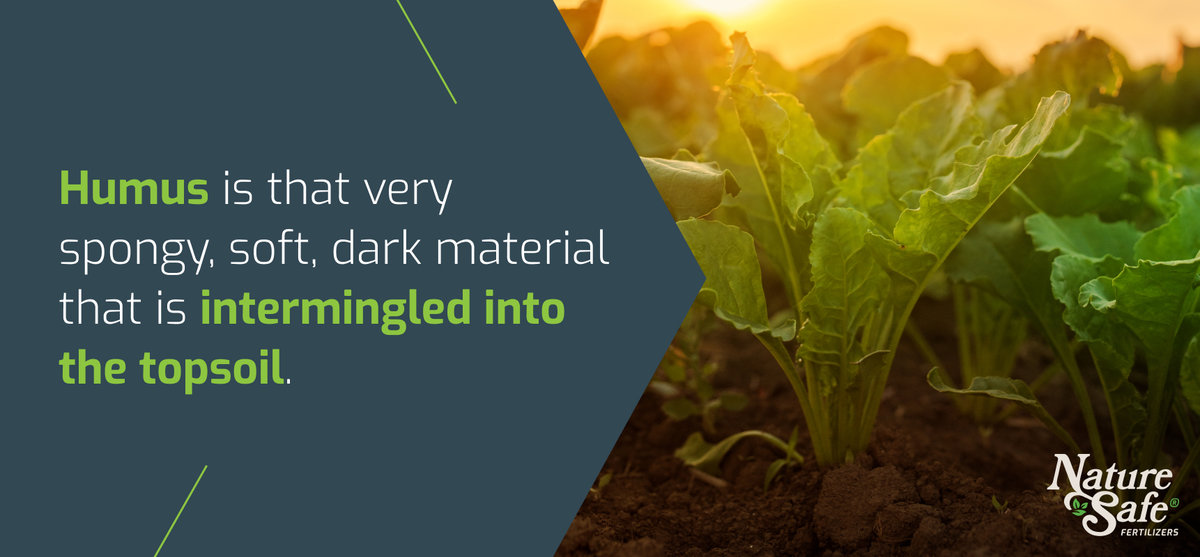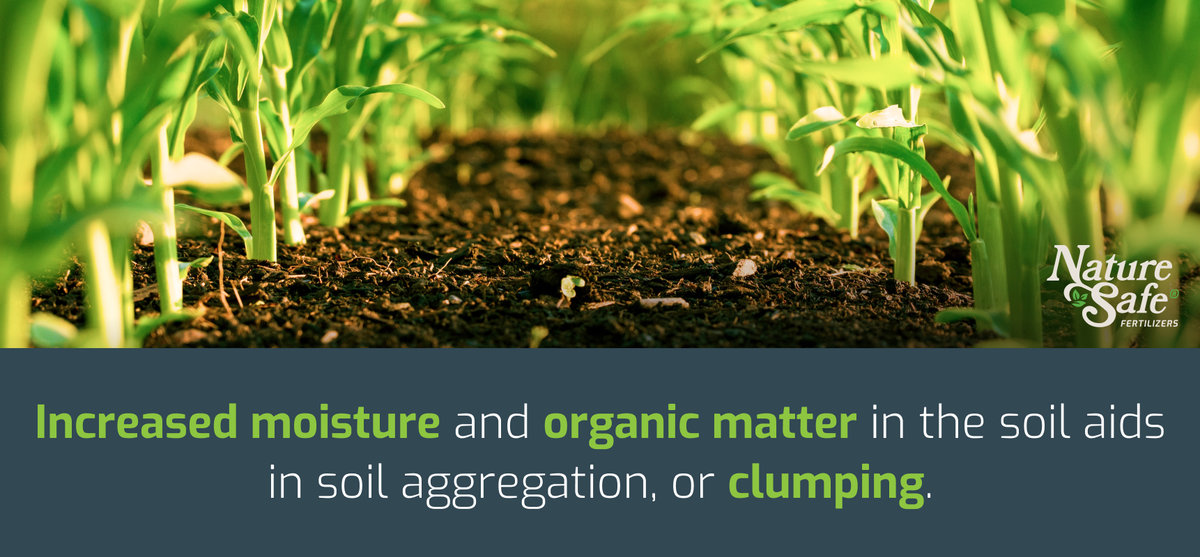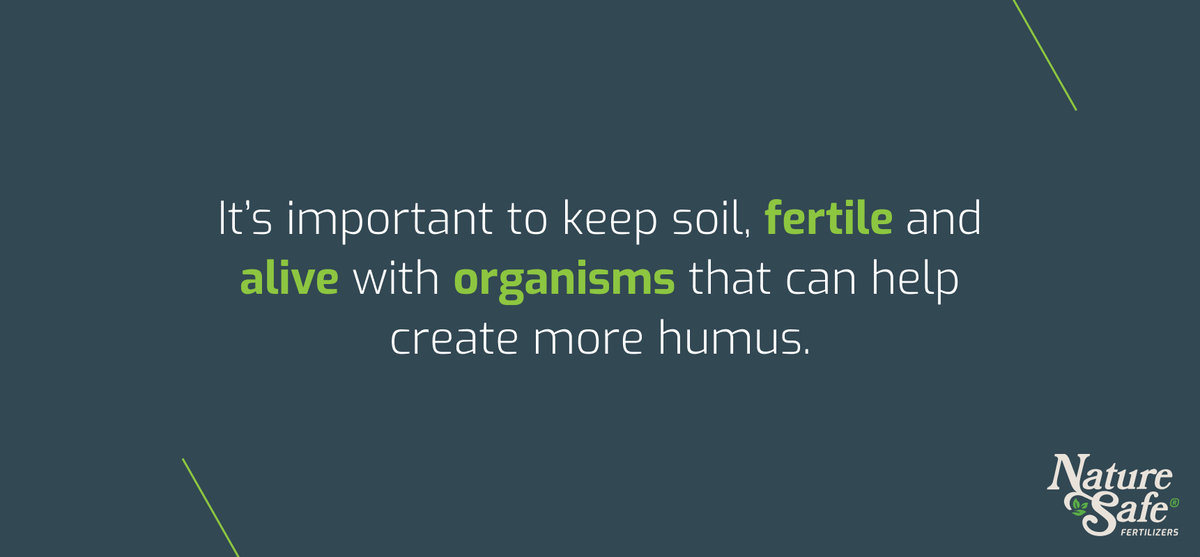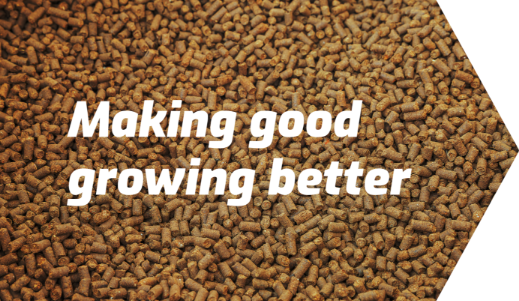
Humus: What it is and Why Your Crops Need it
- Posted: Oct 27, 2022
- Author: Nature Safe Fertilizers
- Crop
It seems to take a village, or rather, a thriving ecosystem and good farming practices, to raise healthy and bountiful crops. Growers know how far correct watering and organic fertilizers can go for plant and soil health.
But there is one other unsung hero that provides an incredible amount of nutrition for crops, and really all plant life. We’re talking about humus.
What is Humus?
Humus gets confused with many other agricultural concepts involved in soil health. While these concepts are all intermingled, humus is its own, incredibly important, part of growing healthy crops. It’s that very spongy, soft, dark material in the topsoil. Many home gardeners find it in bags at the hardware or garden stores, but it also exists naturally on many farms and in nature.
First, let’s start with the misconceptions.
Many people think of it as organic matter in the soil. Think of decomposing plant matter, dead bugs, and such. This organic matter can become humus, but it isn’t yet.
Humus is completely decayed matter that has been broken down into the smallest possible molecules. It is mostly carbon, giving it its identifiable dark, nearly black color. However, it also is composed of nitrogen, and to a lesser extent, sulfur and phosphorus.
Because humus is composed of these elements, it technically is no longer an organic material.

Humic Substances
Humus is made of three components, called humic substances:
Humic Acid
Fulvic acid
Humin
These are differentiated by their ability to dissolve in water in different environments, and their molecular weight. Without a full chemistry lesson, these substances might be difficult to understand. However, it’s important to note that they create not just the physical structure of humus, but they are also responsible for several chemical reactions responsible for some of the important benefits it provides.
Isn’t That Just Compost?
It is true that these two concepts are related, but humus is further along the decomposition process.
Compost can turn into humus, but it might take years. The organic matter in compost is still decaying. It certainly provides lots of nutrients and a food source for many of the organisms necessary to soil health, but it isn’t “finished” decaying. When it is, only then can you call the resulting material humus.
How is It Formed?
The process of humus formation is called humification. There are a few steps in this process.
The breakdown of organic materials starts with the food chain in the soil. Animals, insects, even microorganisms you can’t see consume organic matter. Their waste breaks down the molecular structure of this organic material. This waste still has some nutritional merit, so the cycle of consumption and breakdowns continue until only a basic molecule is left.
Humic acid also combines with carbon to create carbonic acid. This is able to disintegrate and dissolve many compounds into those essential molecules that create humus.
In more tangible terms, humus can be formed through composting, or, on a larger scale for farms, green manuring. The process takes time, but the nutritional value is tremendous.
Benefits of Humus
Why facilitate its creation? Having humus rich soil offers incredible benefits for soil and crops, and therefore growers.
Nutrient Supply
As organisms decompose, the nutrients within them get released into the soil for the crops and soil biome. Not to mention that the elements that humus is made of—carbon, nitrogen, sulfur, and phosphorus—are vital to plant growth.
Nutrient Retention
The humic and fulvic acid that make up humus have a negative charge, which are attractive to a lot of important nutrients like iron, calcium, and magnesium to stay in the soil instead of being washed out with water.
Water Retention
Speaking of water, humus not only has a spongy texture—it truly acts like a sponge.
This carbon-rich material can hold 90% of its weight in water. Good moisture retention in the soil saves growers water. This is especially beneficial for crops that need a lot of water, soil types that don’t naturally hold much moisture, or dryland farms.

Soil Structure
The combination of increased moisture and organic matter in the soil aids in soil aggregation, or clumping. Aggregation gives the soil structure, which reduces leaching and creates a stable environment for the soil organisms. Soil organisms with food are one step to create more humus.
pH Balance
Humus is slightly acidic, generally about 5 on the pH scale. Many plants thrive in gently acidic soil, so having it in the soil makes for happier crops. It also stabilizes the pH in the soil, acting as a kind of buffer for the compounds that can greatly change its acidity.
Humus Formations
Humus can come from any decaying organic matter. However, the different origins of the decayed plants affects where it settles in the soil and what environments it is most often created in.

Mor
Mor is most often found in coniferous forests, and sits on top of the soil. It’s often made from insects and organisms that live near the top of the soil, like mushrooms and earthworms.
Modor
Modor is usually slightly more mixed into the soil than mor. It is created when invertebrates and bugs digest plant matter that can be easily folded into the soil naturally.
Mull
Mull, or mul, is the deepest, most well integrated formation of humus. It’s usually the most acidic, which causes organic matter in it to be decomposed more quickly.
Muck
The University of Wisconsin-Lacrosse identifies a fourth humus formation called muck. Muck is more rich in minerals, and denser than peat humus. UWL also states that it has a higher capacity to absorb water and release nutrients than other humus formations.
The Connection Between Humus and Fertilizer
The carbon, nitrogen, and other nutrients that make up humus are often used up quicker than they can be created. For this reason, it’s important to keep soil fertile and alive with organisms that can help create more humus.
Organic fertilizers feed not just the crops, but the life within the soil where they reside. More vital nutrients mean more organisms with more capacity participate in humification. This is not only an indication of a healthy soil, but an important piece of the soil fertility puzzle.

